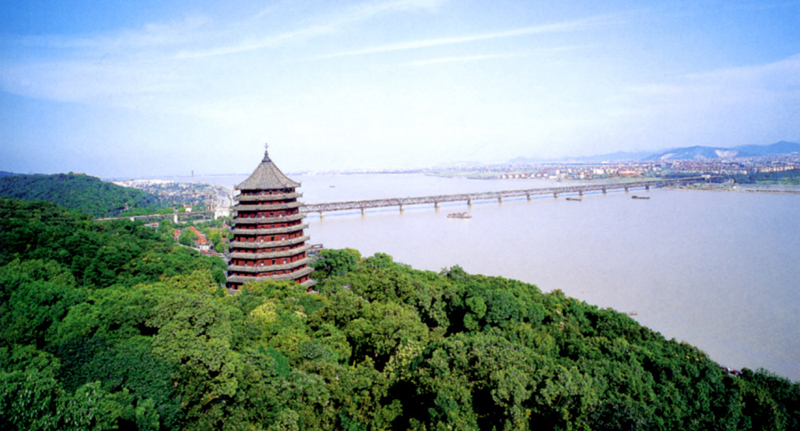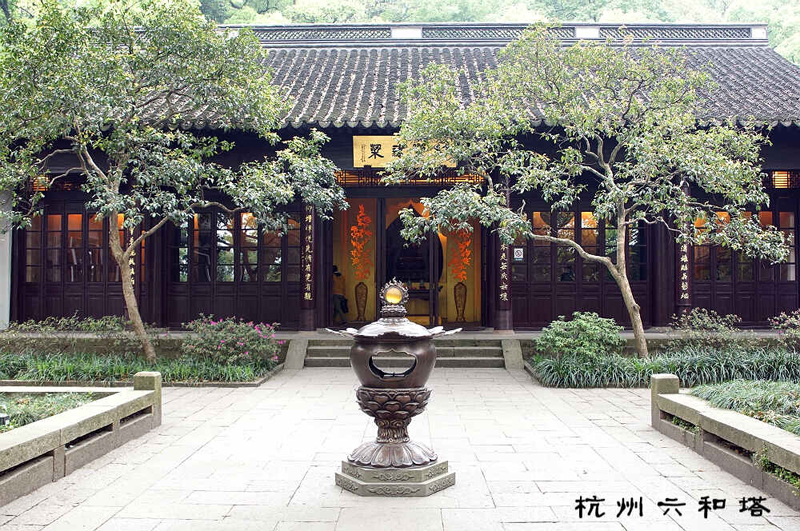- Liuhe Pagoda – a Warrior Standing Nearby Qiantang River
- 2013-07-16
-
Liuhe Pagoda, or literally Six Harmonies Pagoda, is a multi-storey Chinese pagoda in southern Hangzhou, Zhejiang province. It is located at the foot of Yuelun Hill, facing the Qiantang River. Originally constructed in 970 AD during the Northern Song Dynasty (960–1127), the Leifeng Pagoda is the core of Liuhe Tingtao (Hearing the Tidal Bore at Liuhe Pagoda), a scenic spot of West Lake’s Ten Top Views. It was destroyed in 1121, and reconstructed fully by 1165, during the Southern Song Dynasty (1127–1279).

The pagoda was originally constructed by the ruler of the Wuyue kingdom, some of which would later make up modern Zhejiang province. The name Liuhe comes from the six Buddhist ordinances and it is said that the reason for building the pagoda was to calm the tidal bore of the Qiantang River and as a navigational aid. However, the pagoda was completely destroyed during warfare in the year 1121.

After the current pagoda was constructed of wood and brick during the Southern Song Dynasty, additional exterior eaves were added during the Ming (1368–1644) and Qing Dynasties (1644–1911). The pagoda is octagonal in shape and some 59.89 meters (196.5 ft) in height; it also has the appearance of being a thirteen-storey structure, though it only has seven interior stories. There is a spiral staircase leading to the top floor and upon each of the seven ceilings are carved and painted figures including animals, flowers, birds and characters. Each story of the pagoda consists of four elements, the exterior walls, a zigzagged corridor, the interior walls and a small chamber. Viewed from outside, the pagoda appears to be layered-bright on the upper surface and dark underneath. That is a harmonious alternation of light and shade.

According to historian Joseph Needham, the pagoda also served as a lighthouse along the Qiantang River. Being of considerable size and stature, it actually served as a permanent lighthouse from the early days of its inception to aid sailors in seeking anchorage for their ships at night.
